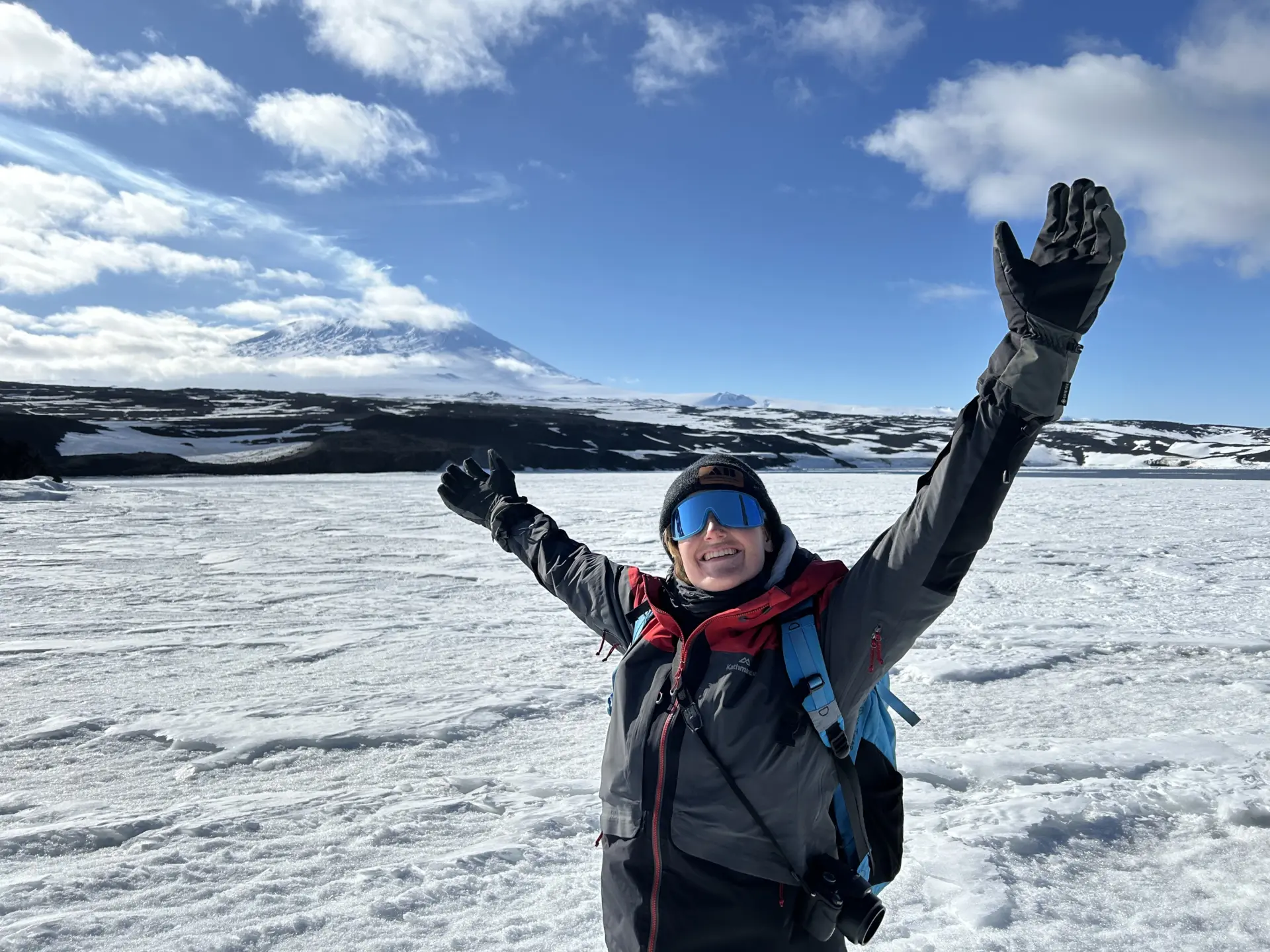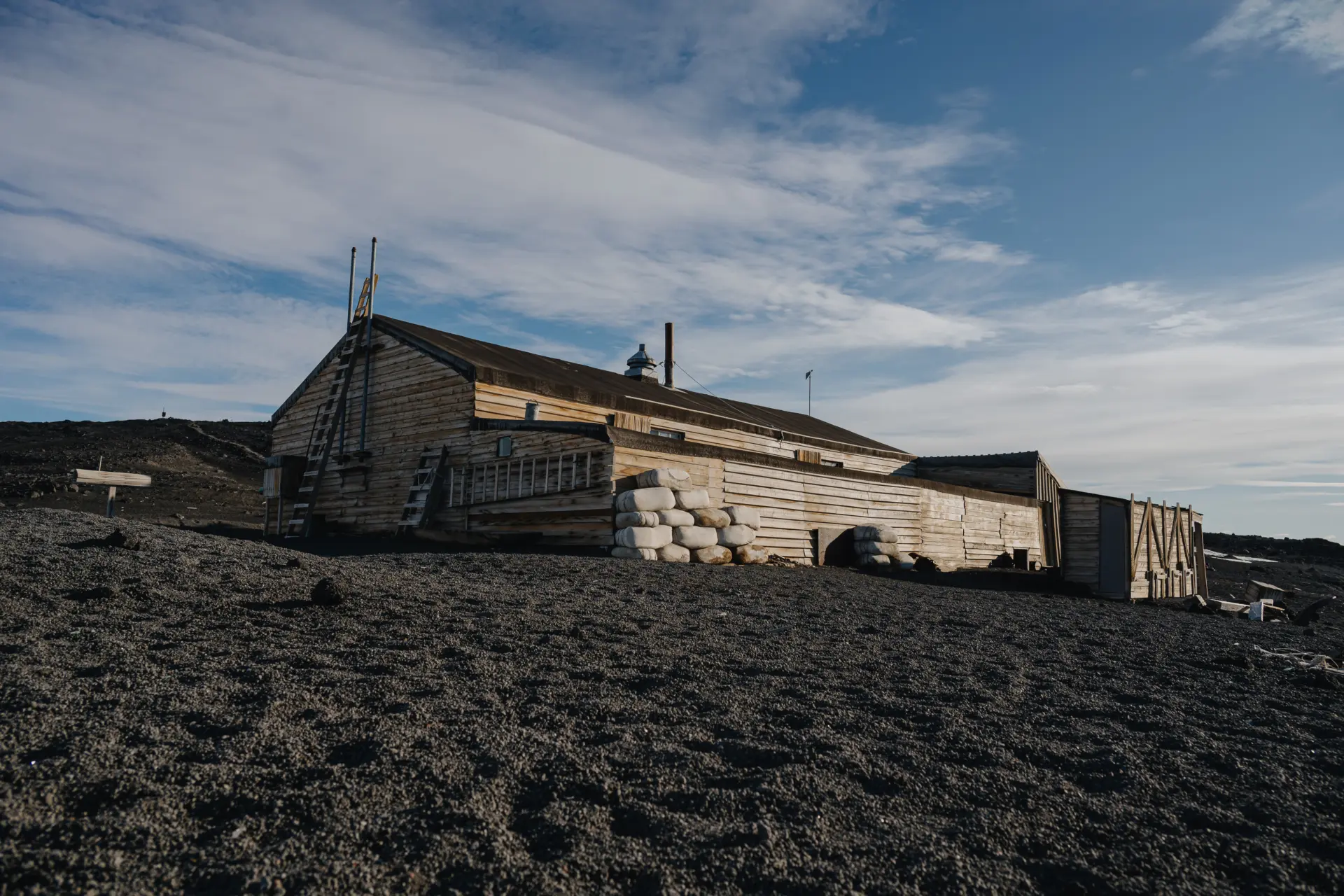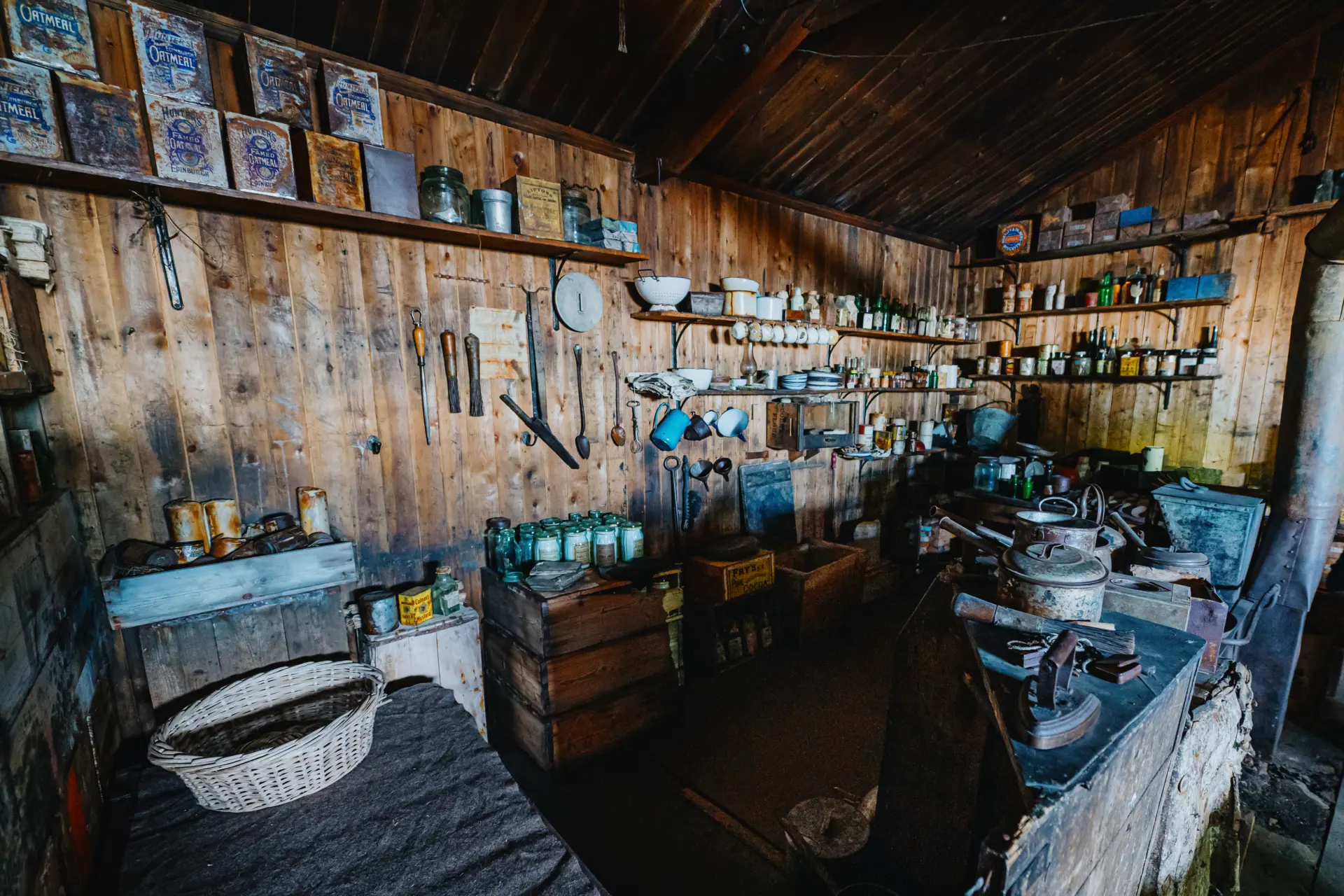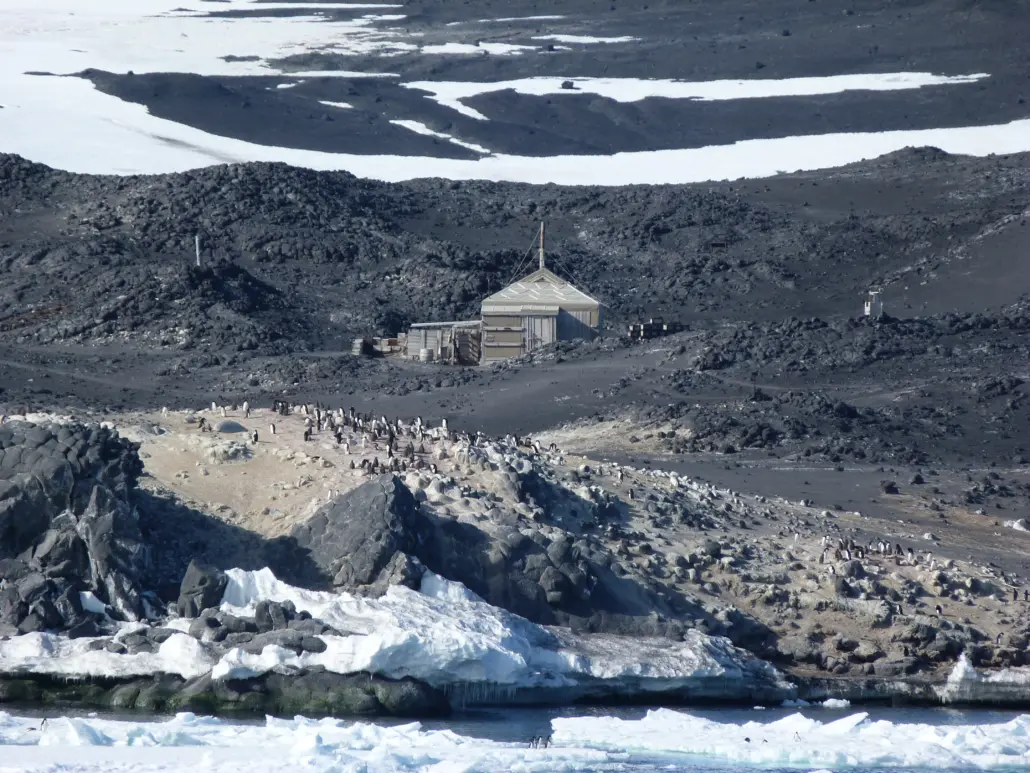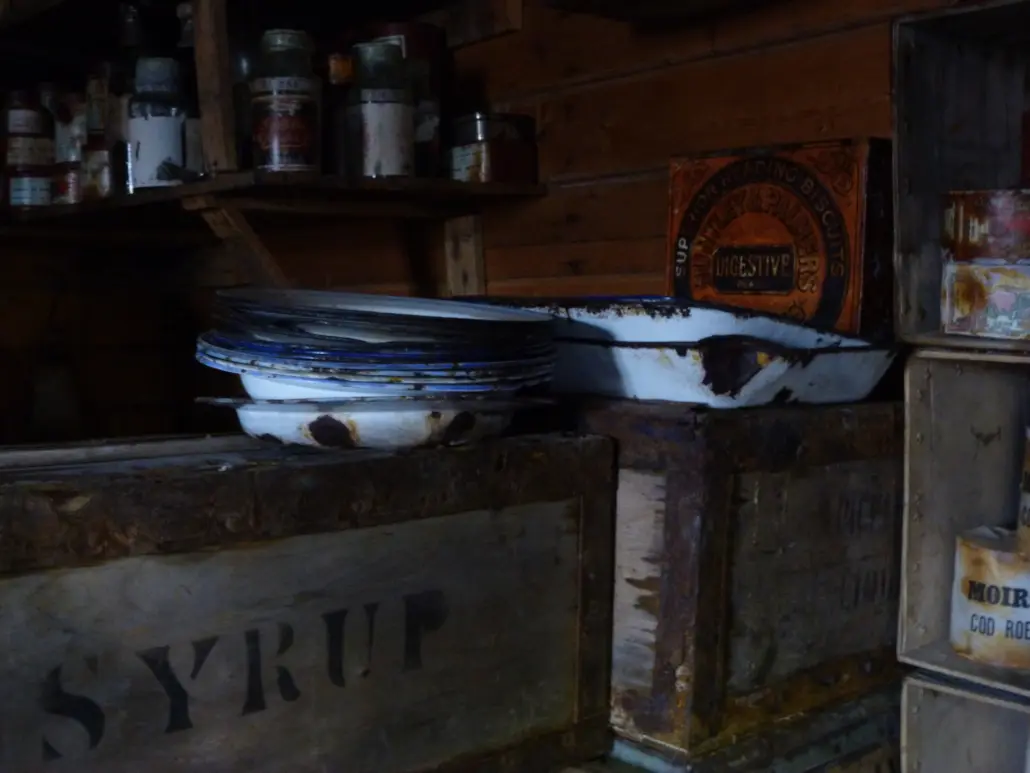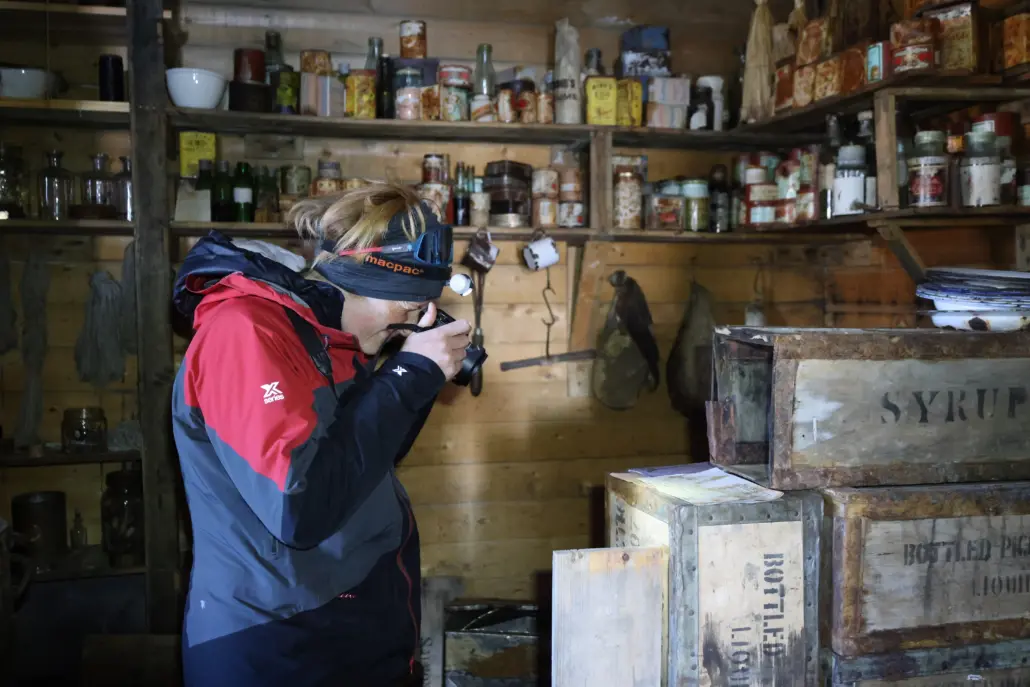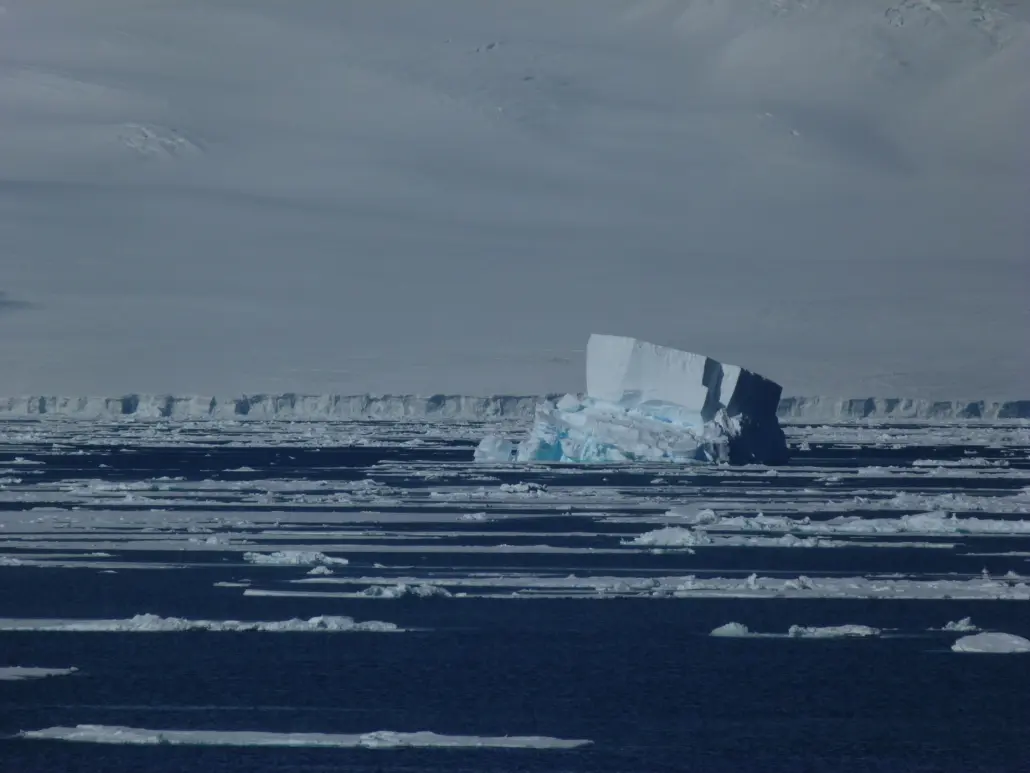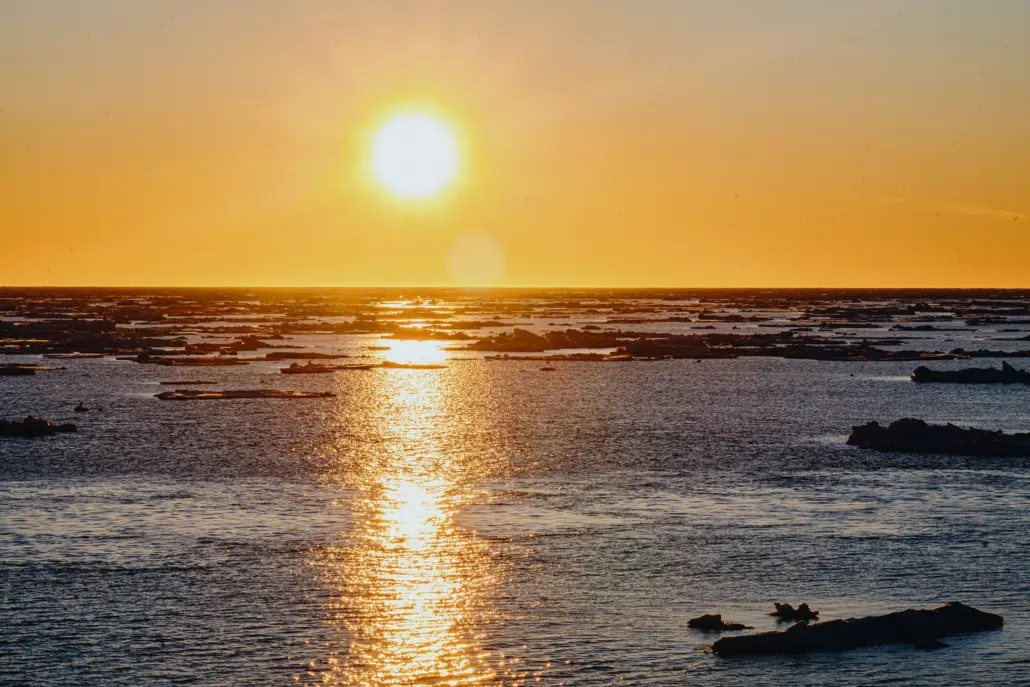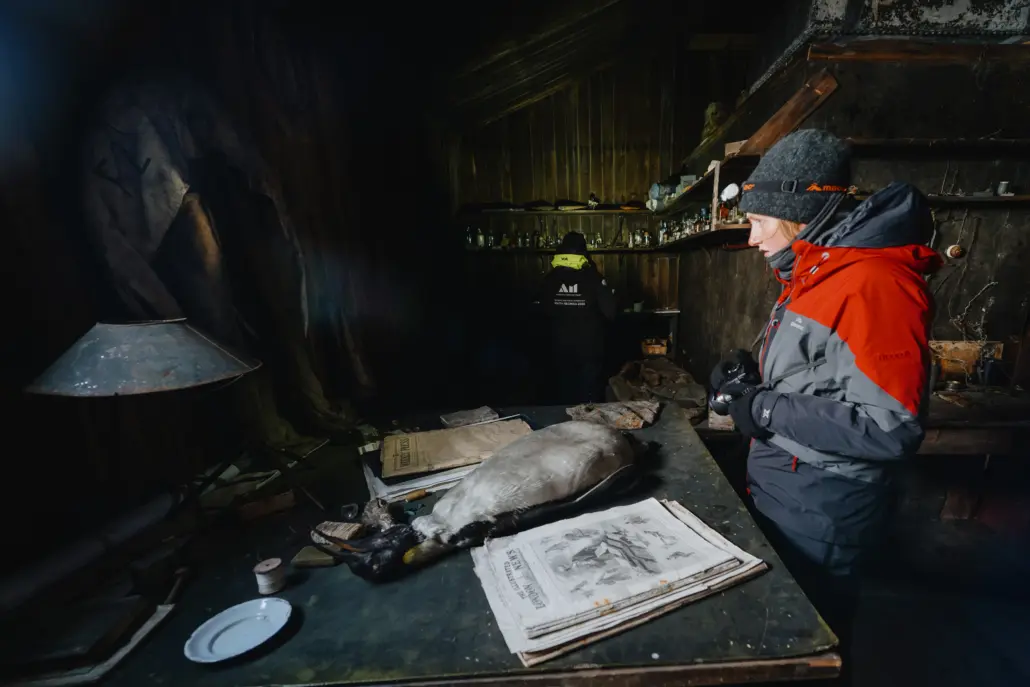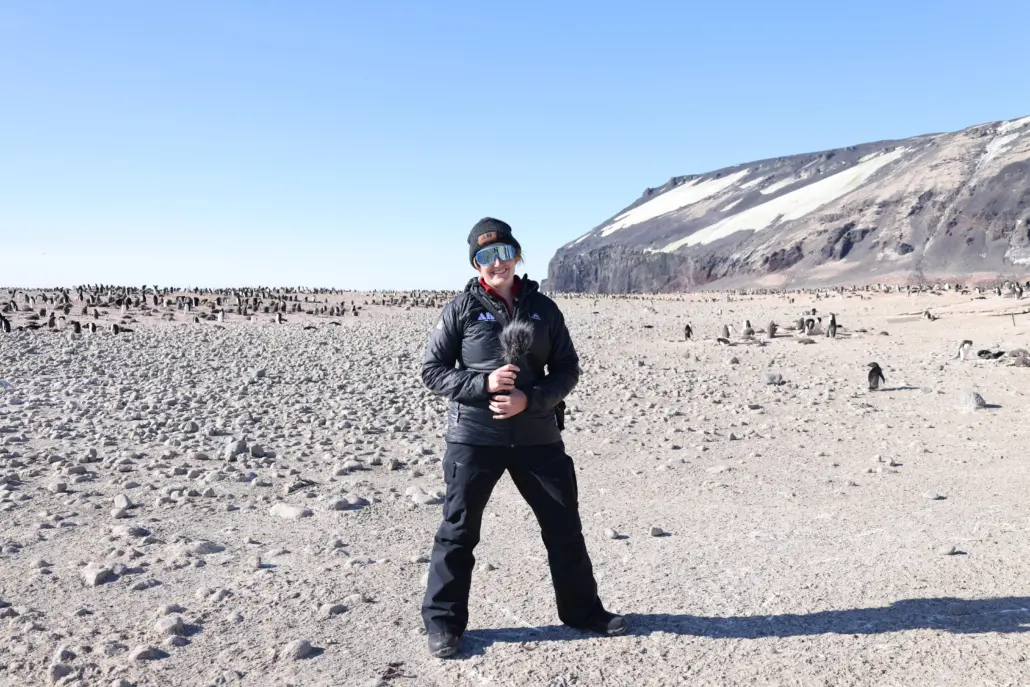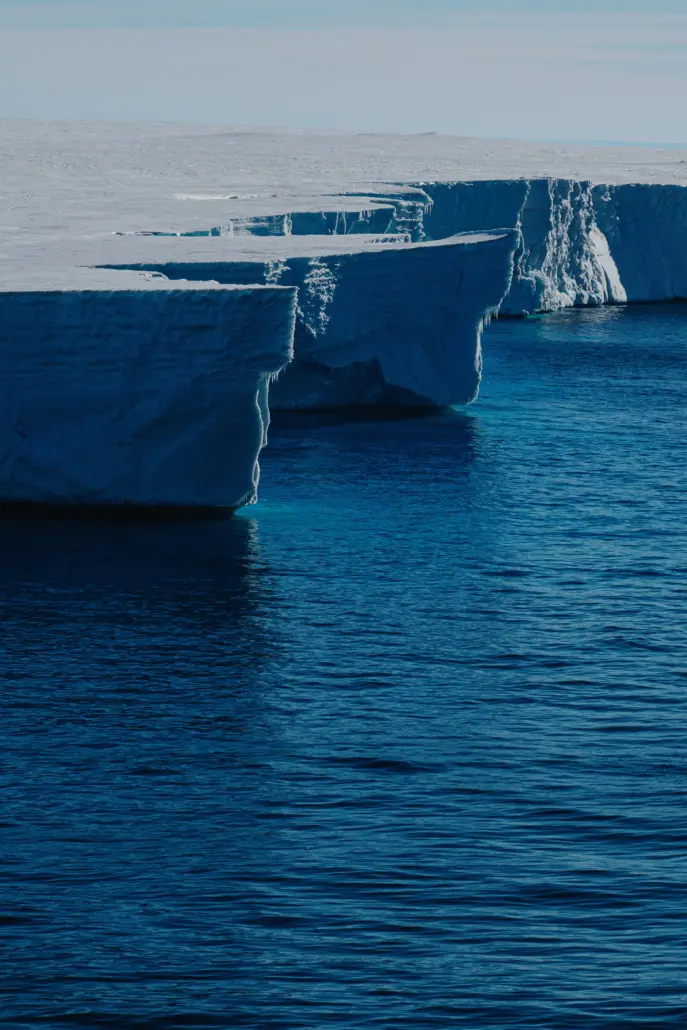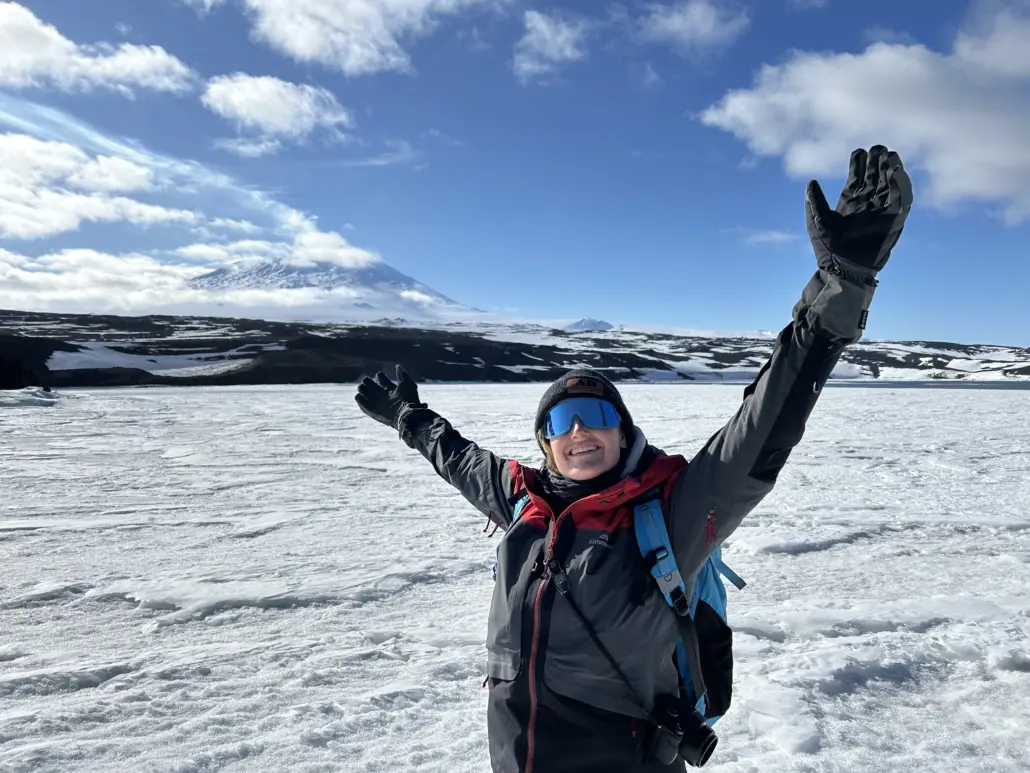Expedition Blog – Maia Ingoe, Ross Sea 2025
Finding home in the ice
“I had a dream when I was twenty-two that someday I would go to the region of ice and snow and go on and on till I came to one of the poles of the Earth.”
– Ernest Shackleton
When I stepped through the door of the historic huts in Antarctica, the last thing I expected was to be reminded of home. I always got stuck one foot over the threshold, in the kitchen. At Cape Evans, the hut used by Scott’s Terra Nova expedition, still stocked as to survive another winter in the dark, had blue and white enamel dishes and mugs – so well loved by many in Aotearoa, including my father. The tins of Colemans mustard, bigger than the ones my mother uses to make macaroni, but the same yellow tin with red lettering as the one I have in my spice drawer at home. The Huntly and Palmers biscuits, another recognisable brand.
At the Cape Royds Hut, used by Shackleton and his men during the earlier Nimrod expedition, it was the Chelsea golden syrup, the same brand I grew up eating with Sunday morning pancakes, the Heinz sauces, the stacks of candles, and the Sunlight soap, wrappings miraculously reconstructed. The oil lamp, an exact copy of the one in Dad’s shed, and the wool blankets on the beds. Outside the hut, I laughed at how surprised I was to see a wooden toilet seat, similar to the one we use for long drops when camping.
I lost so much time in the kitchens of these huts – so mundane compared to Ponting’s darkroom, Scott’s cubicle, the bunks still decorated with personal effects. It all reminded me so strongly of home in Aotearoa, even as we felt the spirit of the men who lived and suffered there as strongly as we smelled the seal blubber and penguin guano.
These artefacts speak to the humanness of these men – who lived, ate, slept, laughed, and did all these human things while withstanding the cold and dark of Antarctic winters. This mundanity is not why they are remembered as heroes of polar exploration; it doesn’t feature in the grand and tragic story of Scott’s race to the South Pole, or the ascent of Mount Erebus on Shackleton’s expedition. Yet these artefacts triggered some of the most emotional reactions in me – realising maybe, how much alike the rest of us these polar heroes were. They were not superhuman – they were men, and they were attempting things thought impossible. They survived remarkable challenges in the remotest and most un-human of places. Some of them were as young as me – 22 when I visited.
The men who ventured out on Antarctic expeditions were backed by varying levels of status, prestige, money, scientific endeavour and lust for power and adventure. Despite facing at times horrible hardship, and having to work and fundraise for many years to do so, many of those men returned to the Antarctic. The two huts I mentioned were the second respective expeditions of Shackleton and Scott.
What they all likely had in common, across different years and nationalities, was a craving for the Ice.
Antarctica gets into your bones – the gravitas of the harsh environment, and the scale, humbles you beyond regard. Like me, and many others who have dreamed of going there and have been lucky enough to achieve it, polar era explorers were entranced by the ice. They were regular men, driven by their passion for the place.
Stepping into those huts, I learned those men weren’t so far removed from us today. They all left, and if lucky enough, returned via the harbours of New Zealand. In many ways, home was always with me – at Cape Evans, I wore my old Swanndri, my Dad’s from when he was a kid. From the qualities of the polar-era explorers, their ability to endure and overcome, I take many lessons on how to face the challenges of today.
The reason I applied for the Inspiring Explorers Expedition™ was, at its heart, because of a drive to understand climate change. I wanted to experience the grandeur of the Antarctic landscape, witness the fantastic wildlife, and be in a place where humans truly do not belong, and is irreversibly changing anyway. I also wanted to face the reality of how Antarctica is changing, and as someone who has spent the majority of their life trying to grapple with climate change, go to the continent that is in many ways, at the centre of that change. The privilege and irony of that opportunity is not lost on me. What happens in Antarctica has huge consequences for us, back home in Aotearoa. As I learnt about the history of polar exploration, I was trying to grapple with an increasingly unstable future.
I was wildly unprepared to be confronted with that reality. Our first steps on the continent were at Cape Adare – where the first human dwelling on any continent still standing is located. We’d been warned of the harsh, stone-whipping wind, the cold and exposed beach where the largest Adelie penguin colony in Antarctica lives. The day we landed, racing through fast moving bergs and currents, we couldn’t believe the clear, still blue sky. We were soon stripping off our outer jackets, the unimpeded sun rays beaming down on us. Penguins lay on their bellies, cooling themselves or just saving energy in the heat. It was the temperature of a cool winter’s day in Aotearoa, more than above average for summer in Antarctica. The reality of human-driven climate change was, and is, terrifying.
Climate change is destabilising. Our first reaction is to curl into a ball and hide. After Cape Adare, that was what I did. But if that was the reaction of Antarctic men to hardship, they would freeze and starve and die before accomplishing anything. Like them, I chose to keep going. Those explorers, I hope, would want to preserve the Antarctic, would want the splendour of the sea ice to continue. We now face a trajectory where that sea ice fails to form, year after year, and the entire Antarctic, from huts to penguins, suffers as a result – unless we drive down emissions, and fast. All of us, should want this place, and it’s splendour to continue.
In times of survival in the harsh Antarctic winters, Shackleton’s leadership and camaraderie shone through. He never left a man behind, turning away short of the South Pole to save his and his men’s lives. As I look to the climate crisis, I know it is only by bonding together that we can change its course and survive it’s consequences, and that no person should be left behind. Scott prioritised scientific endeavour at all costs, right to the very end – the Polar party carting with them 35 pounds of geological samples from the Beardmore Glacier, only discovered by the search party at their fatal tent when summer returned. His expeditions paved the way for the research that is ongoing at Antarctic bases today, and is crucial to understanding climate change. When we visited Antarctica, a team of scientists at Scott Base were working to gather ice core data to determine the grave tipping points for the loss of the Ross Ice Shelf, which could lock in 4.5 metres of sea level rise, making many communities in Aotearoa uninhabitable.
Polar era explorers existed in a time before humans really understood our impact on the environment, and how that in turn would threaten the conditions where we can survive on Earth. The first mention of the Greenhouse Gas Effect was published in a New Zealand newspaper on mining in 1912 – coal consumption was explained to be pumping millions of tons of carbon dioxide into the atmosphere. The surviving men from Scott’s Terra Nova expedition were still in Antarctica – a year later, newspapers would become frenzied with the news of his demise. They’d published his final words: “For God’s sake, look after our people.”
I am probably more familiar than most with the impacts of climate change on our homes – but it is something else entirely to be presented with the beauty of the sea ice, the grandeur of the Ross Ice Shelf, the Admiralty range, and the sheer scale of the Drygalski Ice Tongue. To become mystified by Adelie penguins in their hurried colonies, to be struck with awe as a blue whale surfaces, or as a pod of orcas feed on the edge of the ice in McMurdo Sound. To really love the Ice, and see first-hand how crucial it is to the entire Antarctic food chain. To see the vulnerability of many of the historic huts to storm erosion, sitting so close to sea level, more exposed as ice melts. Witnessing that is another thing entirely.
The truth is, it is impossible to know whether polar-era explorers would care about the climate today, or if they’d simply take their glory and leave with the pain and trauma they earned on the Ice. But I would hope they would fight tooth and nail to awaken the public to the crisis. I hope they’d spread the word until their voices went hoarse, all in dedication to the place they kept returning back to.
Now, when I feel overwhelmed by the climate challenge humanity faces, I think back to sitting on a small boat alongside the sea ice, after visiting Shackleton’s Nimrod hut. I gaped at the crooning icicles underneath the shelf and was amused by the Adelie penguins. I raised my face to the sun beaming on ice in the 24-hour-daylight. I remember the home I found in the Antarctic, and I keep going in the hopes we get to keep it.
Maia Ingoe
Inspiring Explorer™

